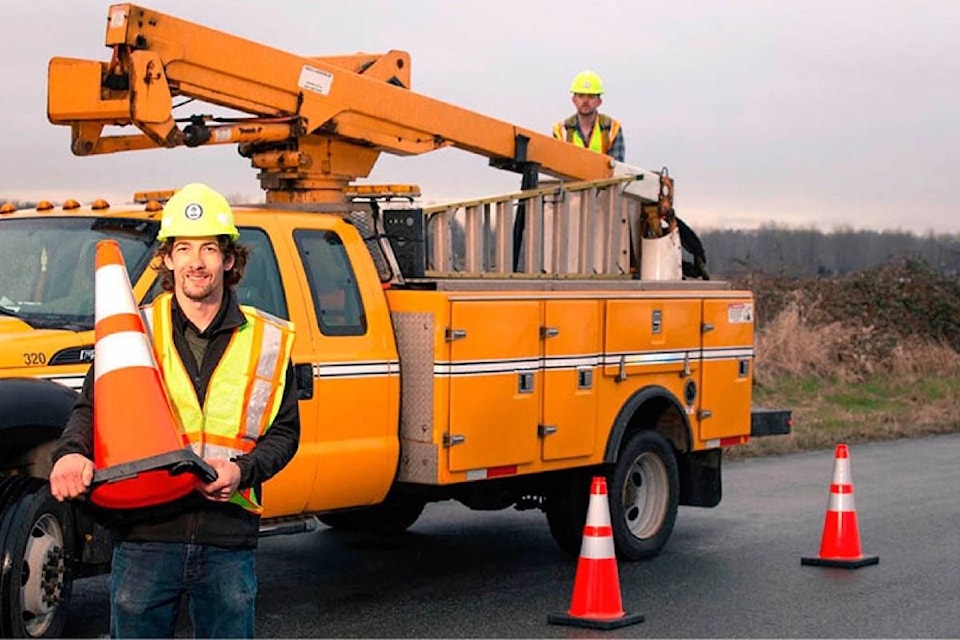Do you know what the “Cone Zone” is? They’re work areas set up to alert people that roadside workers are on site, and drivers are being asked to slow down and practise safe driving whenever they encounter a cone zone on B.C.’s roads and highways.
Wildfires, increased traffic on roads, and the province’s reopening creates an increased risk for roadside workers, who can be engaged in a wide variety of activities. While most people immediately think of construction zones, roadside workers include municipal workers, landscapers, flag people, tow truck drivers, utility workers, and first responders. In recent weeks there have also been firefighting crews and equipment at work on or beside roads.
“Roadside work is a dangerous job,” says Louise Yako, program director for Road Safety at Work and spokesperson for the 11th annual province-wide Cone Zone awareness campaign. “With regional travel restrictions lifted and more activity on roads, we all need to do our part when driving to make sure roadside workers make it home to their family at the end of their shift without injury.”
Between 2011 and 2020, 12 roadside workers were killed and 207 were injured. Last year, 23 workers were injured because of being hit by a motor vehicle.
Cone Zones help protect workers and drivers from injury or death. Yako says anyone approaching a Cone Zone needs to slow down, leave their phone alone, and pay attention to temporary road signs, traffic cones, and directions given by traffic control persons.
In addition to putting people’s lives in danger, careless driving in Cone Zones can lead to some hefty fines:
· Using an electronic device while driving ($368)
· Speeding ($196 and up)
· Disobeying a flag person ($196)
· Disobeying a traffic control device ($121)
The province’s “Slow Down, Move Over” law spells out legal responsibilities for drivers when vehicles with red, blue, or amber flashing lights — tow trucks, fire, police, ambulance — are present. The law requires drivers to slow to 70 km/h if the posted speed limit is greater than 80 km/h.
If the posted speed is less than 80 km/h, drivers need to slow to 40 km/h. Drivers should always be prepared to move over and increase the space between their vehicle and the work zone, if it’s safe to do so.
The Cone Zone campaign runs through the end of August, supported by the Work Zone Safety Alliance. For more information, visit www.ConeZoneBC.com.
editorial@accjournal.ca
Like us on Facebook and follow us on Twitter
